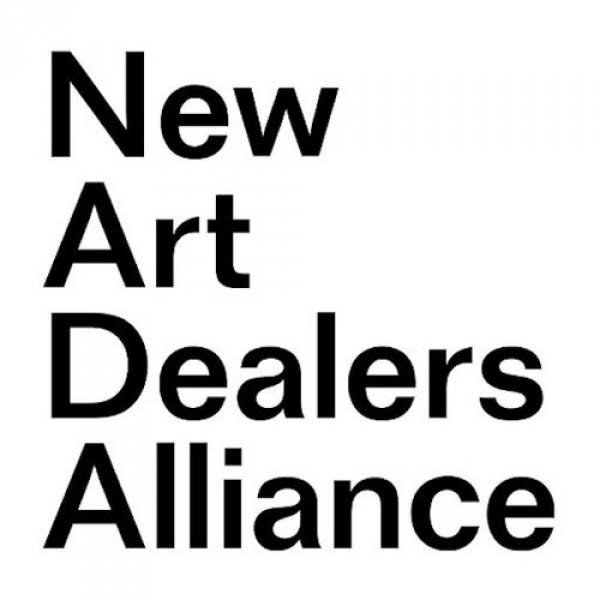Finally, Chicago has an art exhibition that might make an audience laugh.
“The devil is in the details,” a retrospective featuring the work of artist and drag entertainer Jerome Caja, is on display now through March 8 at Garfield Park’s Goldfinch Gallery, 319 N Albany Ave. The exhibition features over 40 works from the late Caja, whose intimate miniature paintings transform the tragedy of the AIDS crisis into humorous reflections on spirituality and death.

Most of the works in the Goldfinch exhibition could easily fit in the palm of one’s hand. For his detailed miniature paintings, Caja would turn bits of trash—pill containers, pistachio shells, bottle caps—into tiny canvases. His paints were unconventional as well; Caja often used white-out, enamel pens and nail polish–the kind of things usually found rattling around at the bottom of a drag queen’s makeup bag.


“I really wanted to draw the audience’s attention to the detail in these small pieces,” says Lauren Leving, curator of “The devil is in the details” and an amateur Caja historian. “I think the longer that you look at or experience them, the more you start to see these repeat characters, symbols and color palettes.”
Caja often used recurring motifs in his paintings such as eggs, birds, clowns and Catholic saints. Caja was born in Cleveland in 1958 and grew up as one of 11 boys in a staunchly Catholic household.

In one untitled work in the exhibition, a small match box is painted with two blue birds embracing; to their left, a large cracked egg ascends as though to heaven. A painting of an egg frying is inside the box. The piece is part of Leving’s personal collection.
“For me the eggs in Jerome’s work represent both birth and death. There’s humor and also mortality, especially as Jerome is confronting his own illness and imminent death,” said Leving. Caja was diagnosed as HIV-positive in 1989.

In one untitled work in the exhibition, a miniature painting adorns the cover of a small metal container, similar to one that might hold breath mints. The painting shows a Romanesque temple burning in the background as a small, grim reaper-like figure approaches the viewer.

This piece is one of many that Caja made over his lifetime to honor his longtime friend and collaborator Charles Sexton. The two met while studying at the San Francisco Art Institute. Sexton, Like Caja, was later diagnosed with HIV.
“They had a conversation that whoever died first, ‘the loser,’ being the person that lived longer, would inherit the other’s ashes and make art with them,” said Leving. Caja would often incorporate Sexton’s ashes into his paintings, adding another layer to the artist’s meditations on death and spirituality.
Leving was first introduced to Caja’s practice while working on the exhibition “About Face” at Lincoln Park’s Wrightwood 659 gallery, 659 W Wrightwood Ave. The exhibition, celebrating the 50th anniversary of Stonewall, featured a number of Caja’s works.
Shortly after the exhibition wrapped, Leving moved to Caja’s hometown of Cleveland to start a position at moCa Cleveland. There she was introduced to Caja’s childhood best friend Anna van der Meulen, whom Leving lived with while looking for long-term housing in the city. After Caja’s passing in 1995, van der Meulen inherited over 200 pieces of Caja’s work. Many of the pieces in Goldfinch’s exhibition are from this collection.
Leving began connecting van der Meulen with curators at Oberlin’s Allen Memorial Art Museum, who included some of Caja’s work in their “The Body, the Host: HIV/AIDS and Christianity” exhibition in 2024. Subsequent shows at New York City’s Bortolami Gallery followed before “The devil is in the details” opened at Goldfinch this January. The exhibition is amongst the sixth to feature Caja’s work in recent years.
Leving credited Caja’s recent revival in popularity to the accessibility of his work, pointing to the recurring symbols and motifs drawn from outside culture that modern viewers still recognize.

“I think that drag is also quite an accessible medium or style of art,” said Leving. After moving to San Francisco in 1985, Caja quickly became a fixture of the city’s queer underground art scene. Renowned for his lavish parties, Caja also performed under the drag persona Connie Krishna.
Leving added, “With drag, you can relate to the performer through your body, or through dialogue, and there’s a connection there. I think that Jerome is so effortlessly fusing the lowbrow and highbrow of art to reach widespread audiences.”


